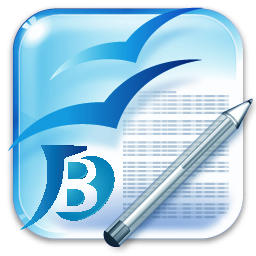Indonesian smart schools: Their influence on the ability of information literacy on the biology field
DOI:
https://doi.org/10.26555/bioedukatika.v8i1.15071Keywords:
Digitalization, Information literacy, Learning reformAbstract
Information literacy in the information society era is very important for every individual, especially for students to prevent misunderstandings and misconceptions. Digital-based learning can influence on students' information literacy abilities. The purpose of the study is to look at the effect of digital-based learning (Indonesian Smart Schools) on students' information literacy abilities. This research was conducted from February to June 2019, at SMA Negeri 2 Tasikmalaya. The research method was a true-experimental design with randomized pretest-posttest control group design. This study population was class X, amounting to 299 people, with cluster random sampling technique, the results were class X MIPA 1 (experimental) and X MIPA 5 (control). The information literacy research instrument uses a validated instrument from SAILS (30 items). Based on the ANCOVA analysis at the significance level (Î) = 0.05 and based on the comparison of the values gain, it can be concluded that there was an effect of digital-based learning on students' information literacy abilities on Animalia material. Indonesian Smart Schools can be alternative digital learning to hone the ability of information literacy on Animalia material. Indonesian Smart Schools can be an alternative to digital learning to hone the ability of information literacy.References
Aleven, V., McLaughlin, E. A., Glenn, R. A., & Koedinger, K. R. (2017). Instruction based on adaptive learning technologies. In R. E. Mayer & P. A. Alexander (Eds.), Handbook of research on learning and instruction (2nd ed.).
Anderson, R. P., & Wilson, S. P. (2009). Quantifying the effectiveness of interactive tutorials in medical library instruction. Medical Reference Services Quarterly, 28(1), 10-21. https://doi.org/10.1080/02763860802615815
Andretta, S. (2005). Information literacy: A practitioners guide. https://doi.org/10.1533/9781780630755
Arsyad, A. (2016). Media pembelajaran (Revisi). Jakarta: Rajawali Pers.
Bernacki, M. L., Greene, J. A., & Crompton, H. (2020). Mobile technology, learning, and achievement: Advances in understanding and measuring the role of mobile technology in education. Contemporary Educational Psychology, 60, 101827. https://doi.org/10.1016/j.cedpsych.2019.101827
Carrick Enterprises, I. (2012). Project Standardized Assessment of Information Literacy Skills (SAILS). Retrieved from Project SAILS website: www.projectsails.org/site/the-test/
Crompton, H. (2013). A historical overview of M-learning. In Handbook of Mobile Learning.
https://doi.org/10.4324/9780203118764.ch1
Dancey, C. P., & Reidy, J. (2011). Statistics without maths for psychology (5th ed.). New Jersey: Prentice Hall.
Danish, J., & Hmelo-Silver, C. E. (2020). On activities and affordances for mobile learning. Contemporary Educational Psychology, 60, 101829. https://doi.org/10.1016/j.cedpsych.2019.101829
Duderstadt, J. J., & Womack, F. W. (2004). The future of the public university in America: Beyond the crossroads.
Dziuban, C., Graham, C. R., Moskal, P. D., Norberg, A., & Sicilia, N. (2018). Blended learning: the new normal and emerging technologies. International Journal of Educational Technology in Higher Education, 15(1), 1-16. https://doi.org/10.1186/s41239-017-0087-5
Evans, C. (2008). The effectiveness of m-learning in the form of podcast revision lectures in higher education. Computers & Education, 50(2), 491-498. https://doi.org/10.1016/j.compedu.2007.09.016
Fauziah, G., & Lestari, A. W. (2018). Movement civilization of information literacy at primary school in Tangerang Selatan. Edulib : Journal of Library and Information Science, 8(2), 167-179.
Fern¡ndez-Ramos, A. (2016). Online library tutorials in Mexican universities: presence and characteristics. Library Hi Tech, 34(4), 787-802. https://doi.org/10.1108/LHT-08-2016-0094
Fern¡ndez-Ramos, A. (2019). Online information literacy instruction in Mexican university libraries: The librarians point of view. The Journal of Academic Librarianship, 45(3), 242-251. https://doi.org/10.1016/j.acalib.2019.03.008
Fraenkel, J. R., Wallen, N. E., & Hyun, H. H. (2018). How to design and evaluate research in education. New York: McGraw-Hill Education.
Haber, N., & Mitchell, T. N. (2017). Using formative & summative assessment to evaluate library instruction in an online first year writing course. Journal of Library & Information Services in Distance Learning, 11(34), 300-313. https://doi.org/10.1080/1533290X.2017.1324549
Hasugian, J. (2008). Urgensi literasi informasi dalam kurikulum berbasis kompetensi di Perguruan Tinggi. Pustaha : Jurnal Studi Perpustakaan Dan Informasi, 4(2), 34-44. Retrieved from http://jurnalindustri.petra.ac.id/index.php/pus/article/download/17231/17184
Hisle, D., & Webb, K. (2017). Information literacy concepts: An open educational resource. North Carolina: Joyner Library.
Indriani, T. M., Fathoni, T., & Riyana, C. (2018). Implementasi blended learning dalam program pendidikan jarak jauh pada jenjang pendidikan menengah kejuruan. EDUCATIONAL TECHNOLOGIA, 2(2), 129-139. Retrieved from https://ejournal.upi.edu/index.php/edutechnologia/article/view/19668
Kaustubh A., J., Yogita H., K., Mayuri V., M., & Pooja G., N. (2017). Android based e-learning application Class-E. International Research Journal of Engineering and Technology, 4(3), 1745-1748. Retrieved from https://www.irjet.net/archives/V4/i3/IRJET-V4I3400.pdf
Lin, X., Deng, C., Hu, Q., & Tsai, C. (2019). Chinese undergraduate students perceptions of mobile learning: Conceptions, learning profiles, and approaches. Journal of Computer Assisted Learning, 35(3), 317-333. https://doi.org/10.1111/jcal.12333
Lutze, R., & Waldhor, K. (2015). A smartwatch software architecture for health hazard handling for elderly people. 2015 International Conference on Healthcare Informatics, 356-361. https://doi.org/10.1109/ICHI.2015.50
Maddison, T., Doi, C., Lucky, S., & Kumaran, M. (2017). Literature review of online learning in academic libraries. In Distributed Learning (pp. 1346). https://doi.org/10.1016/B978-0-08-100598-9.00002-7
Maesyarah, M., Jufri, A. W., & Kusmiyati, K. (2015). Analisis penguasaan konsep dan miskonsepsi biologi dengan teknik modifikasi certainty of response index pada siswa SM se-kota Sumbawa Besar. JURNAL PIJAR MIPA, 10(1), 1-6. https://doi.org/10.29303/jpm.v10i1.8
Munir. (2017). Pembelajaran digital. Bandung: Alfabeta.
Muqarrobin, T. F., & Kuswanto, H. (2016). Development of an android-based physics e-book to ease students physics learning and its influence on their learning achievement. American Journal of Engineering Research, 5(10), 223-229. Retrieved from http://www.ajer.org/papers/v5(10)/ZE05010223229.pdf
Muyaroah, S., & Fajartia, M. (2017). Pengembangan media pembelajaran berbasis android dengan menggunakan aplikasi adobe flash CS 6 pada mata pelajaran biologi. Innovative Journal of Curriculum and Educational Technology, 6(2), 22-26. Retrieved from https://journal.unnes.ac.id/sju/index.php/ujet/article/view/19336
OECD. (2005). Are students ready for a technology-rich world? What PISA studies tell us. Retrieved from http://www.oecd.org/education/school/programmeforinternationalstudentassessmentpisa/35995145.pdf
Pedra, F. (2006). The new millennium learners: Challenging our view son ICT and learning. Retrieved from https://publications.iadb.org/publications/english/document/The-New-Millennium-Learners-Challenging-our-Views-on-ICT-and-Learning.pdf
Pew Research Center. (2019). Mobile fact sheet. Retrieved from https://www.pewresearch.org/internet/fact-sheet/mobile/
Phillips, M., Van Epps, A., Johnson, N., & Zwicky, D. (2018). Effective engineering information literacy instruction: A systematic literature review. The Journal of Academic Librarianship, 44(6), 705-711. https://doi.org/10.1016/j.acalib.2018.10.006
Prensky, M. (2001). Digital natives, digital immigrants part 2: Do they really think differently? On the Horizon, 9(6), 1-6. https://doi.org/10.1108/10748120110424843
Ramdani, R., Rahmat, M., & Fakhruddin, A. (2018). Media pembelajaran e-learning dalam pembelajaran pendidikan agama islam di SMA Laboratorium Percontohan UPI Bandung. TARBAWY: Indonesian Journal of Islamic Education, 5(1), 47-59. https://doi.org/10.17509/t.v5i1.13332
Rattanawongsa, R., & Koraneekij, P. (2015). A development of blended information literacy learning web for Thai High School Students. Procedia - Social and Behavioral Sciences, 174, 2693-2699. https://doi.org/10.1016/j.sbspro.2015.01.954
SadioÄŸlu., Äpek, N., & Derman, M. T. (2009). Determining the information literacy skills of teacher candidates for the sustainability of quality in education. Procedia - Social and Behavioral Sciences, 1(1), 1455-1459. https://doi.org/10.1016/j.sbspro.2009.01.256
Saunders, L. (2018). Information literacy in practice: Content and delivery of library instruction tutorials. The Journal of Academic Librarianship, 44(2), 269-278. https://doi.org/10.1016/j.acalib.2017.12.022
Sharples, M. (2000). The design of personal mobile technologies for lifelong learning. Computers & Education, 34 (34), 177-193. https://doi.org/10.1016/S0360-1315(99)00044-5
Sholeh, M., Sutanta, E., & Sulistyowati, S. (2017). Designing english rush game as an android-based english learning media for primary school students. International Journal of Computer Techniques, 4(5), 31-35. Retrieved from http://www.ijctjournal.org/Volume4/Issue5/IJCT-V4I5P7.pdf
Sung, Y.-T., Lee, H.-Y., Yang, J.-M., & Chang, K.-E. (2019). The quality of experimental designs in mobile learning research: A systemic review and self-improvement tool. Educational Research Review, 28, 100279. https://doi.org/10.1016/j.edurev.2019.05.001
Suprapto, P. K., Suharsono, Chaidir, D. M., & Ali, M. (2019). Development of wimba 3 dimension interactive animation media on plant anatomy. Journal of Physics: Conference Series, 1233, 012002. https://doi.org/10.1088/1742-6596/1233/1/012002
Szadziewska, A., & Kujawski, J. (2017). Advantages and disadvantages of the blended-learning method used in the educational process at the faculty of management at the University of Gdansk, in the opinion of undergraduate students. 10th Annual International Conference of Education, Research and Innovation, 3938-3946. https://doi.org/10.21125/iceri.2017.1051
Webber, S., & Johnston, B. (2017). Information literacy: conceptions, context and the formation of a discipline. Journal of Information Literacy, 11(1), 156-183. https://doi.org/10.11645/11.1.2205
Wood, D., Bruner, J. S., & Ross, G. (1976). The role of tutoring in problem solving. Journal of Child Psychology and Psychiatry, 17(2), 89-100. https://doi.org/10.1111/j.1469-7610.1976.tb00381.x
Yang, S. Q., & Chou, M. (2014). Promoting and teaching information literacy on the internet: Surveying the web sites of 264 academic libraries in North America. Journal of Web Librarianship, 8(1), 88-104. https://doi.org/10.1080/19322909.2014.855586
Downloads
Published
Issue
Section
License
Authors who publish with Jurnal Bioedukatika agree to the following terms:
- Authors retain copyright and grant the journal right of first publication with the work simultaneously licensed under a Creative Commons Attribution License (CC BY-SA 4.0) that allows others to share the work with an acknowledgment of the work's authorship and initial publication in this journal.
- Authors are able to enter into separate, additional contractual arrangements for the non-exclusive distribution of the journal's published version of the work (e.g., post it to an institutional repository or publish it in a book), with an acknowledgment of its initial publication in this journal.
- Authors are permitted and encouraged to post their work online (e.g., in institutional repositories or on their website) prior to and during the submission process, as it can lead to productive exchanges, as well as earlier and greater citation of published work.









